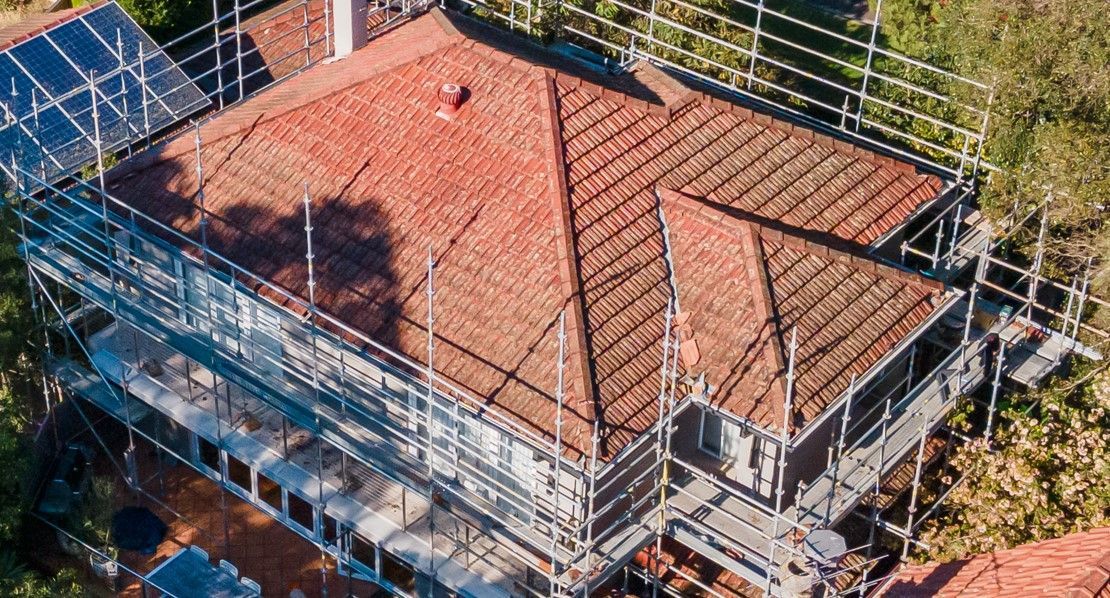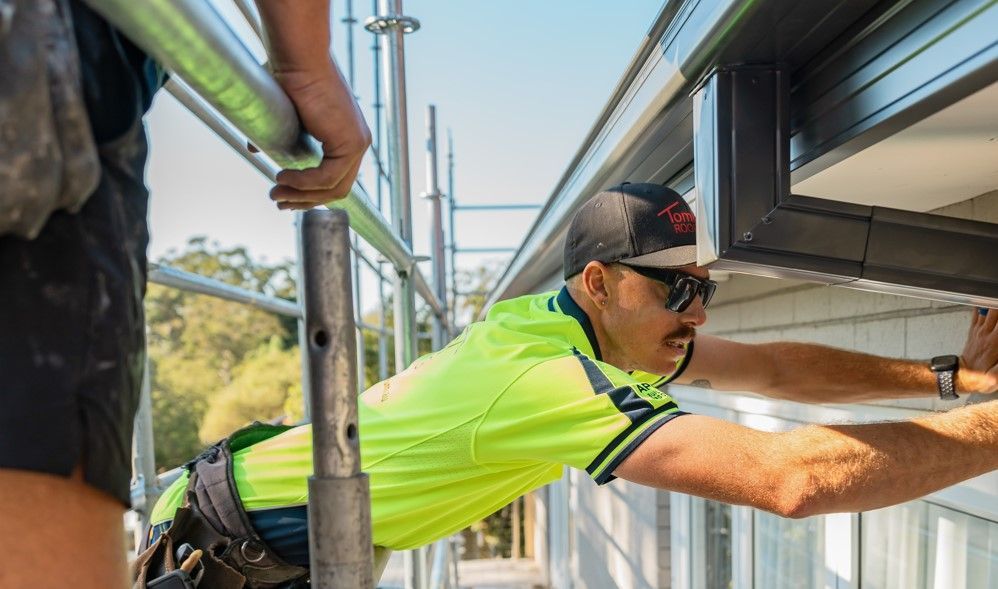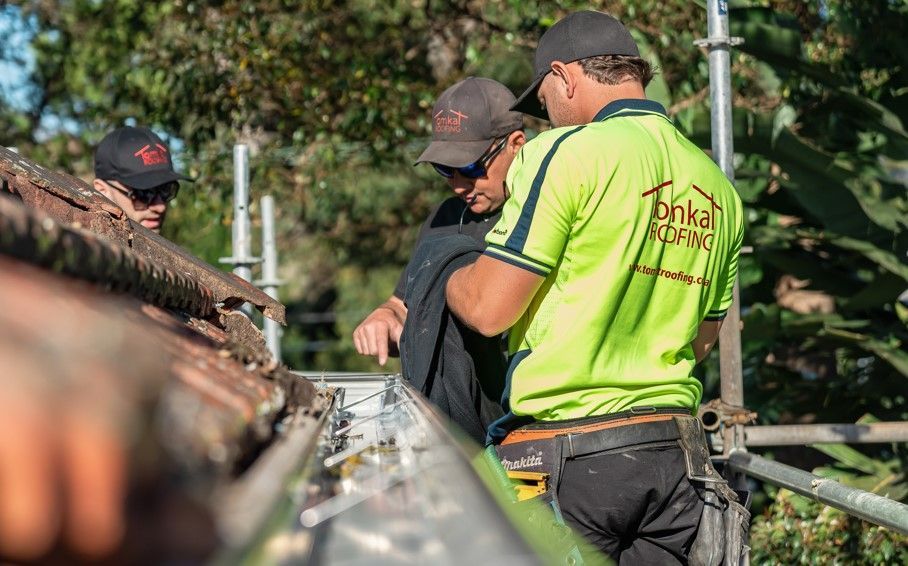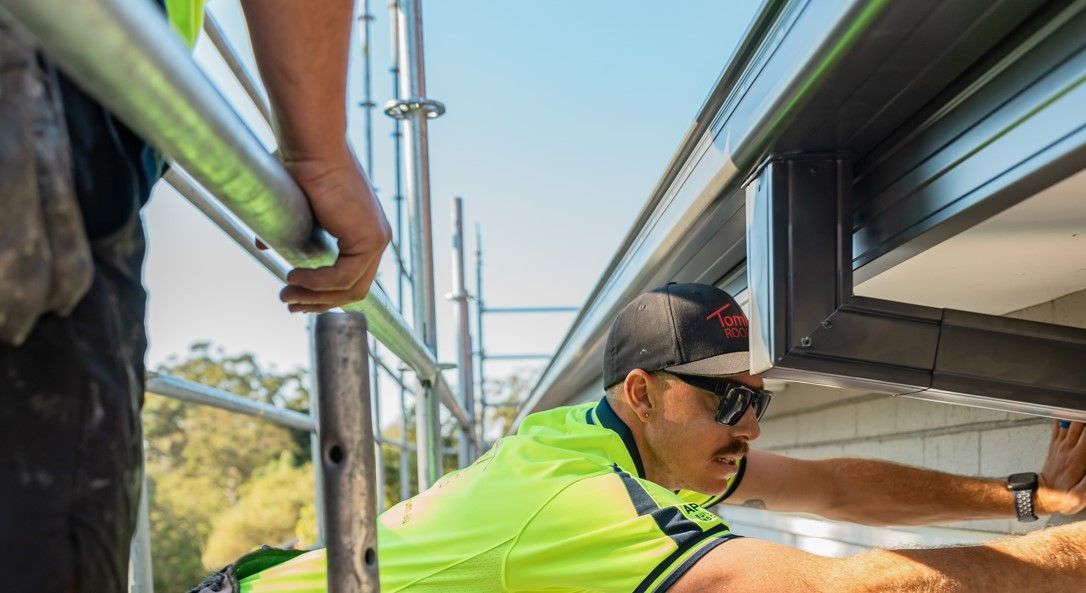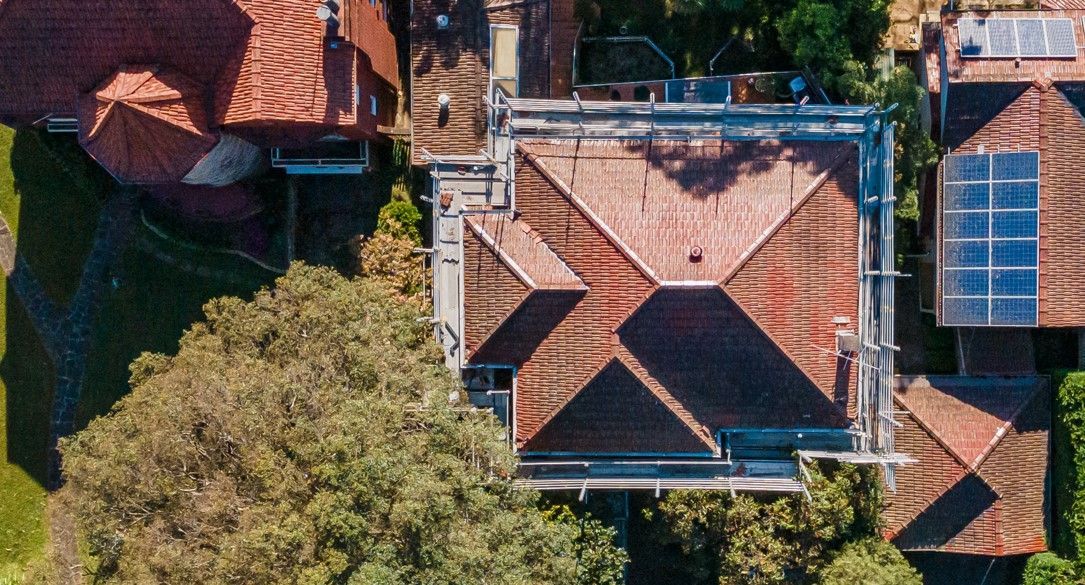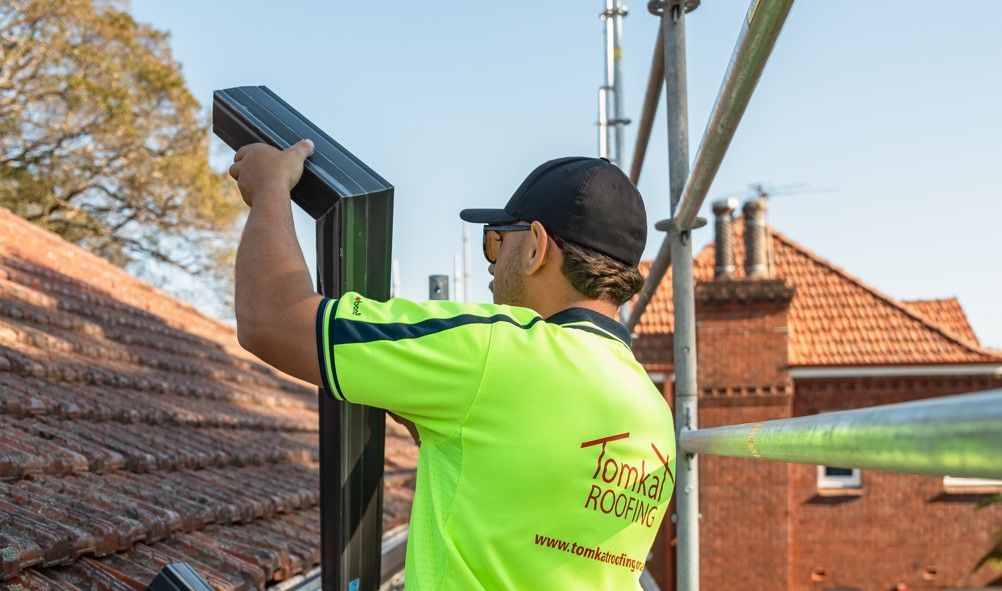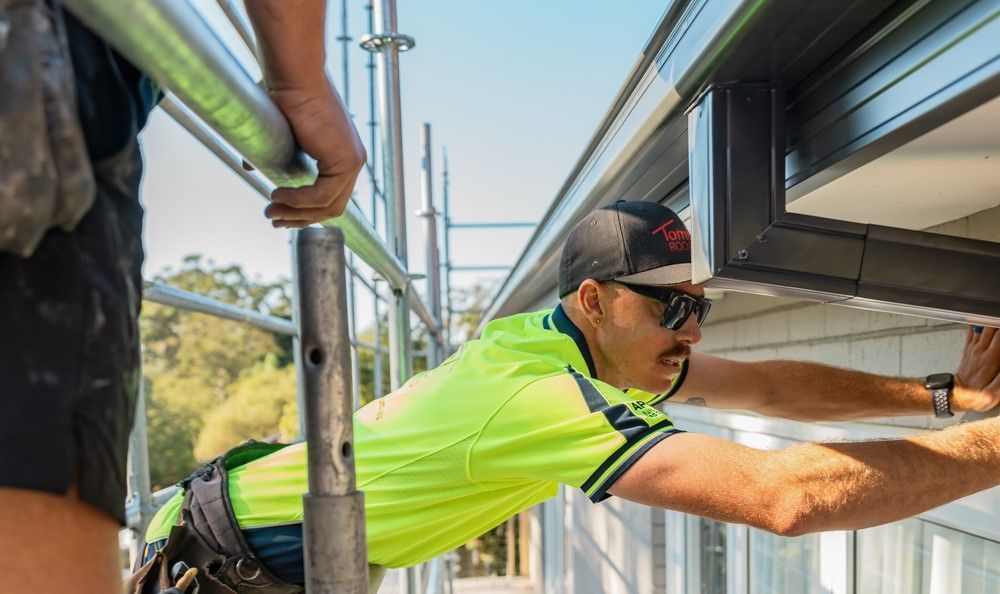ANNOUNCEMENT: TOMKAT ROOFING
are now collaborating with AGC ROOF.
After a successful career, AGC Director Mark Osborn has made the decision to now focus his attention on personal matters.
Following this decision, as of 24/03/2025, the two industry leading companies are transitioning into one unified brand to expand and strengthen their capabilities to service the community’s roofing needs.
Both companies are extremely thrilled for this exciting & unprecedented chapter ahead, as we aim to provide an unparalleled experience to our customers.
Residential Roof Replacement: When Is It Time for a New Roof?
Your roof is a crucial part of your home, safeguarding you from the elements and contributing to its structural stability. Over time, however, even the most durable roofs can start to show signs of wear and tear. But how do you know when to replace your roof?
In this comprehensive guide, we will explore why timely roof replacement is a smart investment, the factors influencing the lifespan of your roof, and the key indicators that it’s time for one.
Why Timely Roof Replacement Is Essential
Many homeowners delay roof replacement to avoid the upfront cost, but this can lead to more expensive repairs in the future. Here are a few benefits of timely roof repair:
1. Preventing Structural Damage
A compromised roof can lead to water infiltration, which weakens your home’s structure over time. Rotting wood, mold growth, and damaged insulation are all costly problems that could be avoided with a timely roof replacement.
2. Avoiding Mould and Mildew
Water leaks can promote the growth of mould and mildew, which pose health risks to your family. Mold remediation can be costly and time-consuming, and in severe cases, it may require tearing out and replacing affected areas of your home.
3. Energy Efficiency
A damaged roof often has poor insulation and ventilation, causing your HVAC system to work harder. Replacing the roof with modern materials can enhance insulation, reducing energy bills by keeping your home at a comfortable temperature without overworking your heating or cooling system.
4. Improved Safety
A roof that's reached the end of its lifespan may become unstable, especially during storms or high winds. A timely replacement prevents potential hazards like roof collapse or falling debris, ensuring your home remains a safe environment for your family.
5. Cost Savings
Neglecting an ageing roof often results in more severe problems down the line, such as extensive water damage, foundation issues, or the need for more expensive repairs. Proactively replacing your roof helps avoid emergency repairs and the associated high costs.
6. Warranty Benefits
Most roofing materials come with warranties that protect for a certain number of years. If you delay roof replacement beyond the recommended time frame, you may void the warranty and lose the opportunity to benefit from these protections. Timely replacement ensures you can take full advantage of the warranty.
7. Avoiding Escalating Damage
A roof that requires replacement can quickly worsen with extreme weather conditions, such as heavy rain, snow, or high winds. Timely replacement prevents these weather elements from further compromising the roof’s integrity, avoiding the domino effect of escalating damage.
8. Enhances Home Aesthetics
A deteriorating roof can greatly diminish the overall look of your home. Replacing it not only provides a fresh look but also boosts curb appeal, enhancing the overall aesthetics of your property.
9. Insurance Considerations
Most insurance policies require homeowners to maintain their roofs in good condition. If you delay roof replacement, it could result in denied claims if damage occurs due to negligence. Timely roof replacement ensures your home insurance coverage remains valid and effective.
Factors Influencing The Lifespan Of Your Roof
Understanding the typical lifespan of your roof is the first step in determining when it might be time for a replacement. The longevity of a roof largely depends on the material used, the quality of installation, and the local climate.
For example, asphalt shingles, one of the most common materials used in residential roofing, typically last between 15 and 30 years. Wood shingles and shakes can last 20 to 40 years, while metal roofs boast a longer lifespan of 40 to 70 years. Materials such as clay tiles and slate can last anywhere from 50 to 200 years.
While these general guidelines offer a broad idea, individual factors like maintenance, exposure to extreme weather, and the surrounding environment can significantly impact how long your roof will last. If your roof is approaching the end of its expected lifespan, it’s essential to monitor its condition more closely.
This brings us to the question: How to know when it's time for roof replacement? Without further ado, let us delve into it.
8 Signs Your Roof Needs Replacement
Sometimes, the need for a new roof is obvious—major leaks or extensive damage may be too severe to repair. However, in many cases, the signs are less obvious. In many instances, though, the signs can be more subtle. Here are a few common warning signs that your roof might need to be replaced:
1. Shingle Damage
If your roof features asphalt shingles, check them for any signs of wear and tear. Curling, cracking, or missing shingles are telltale signs of ageing. Over time, shingles lose their protective granules, leaving them more prone to damage. If you notice bald spots or granule accumulation in your gutters, it’s a sign your shingles are deteriorating.
2. Water Leaks and Stains
Water damage is one of the most critical signs that your roof is no longer providing adequate protection. Look for water stains on your ceilings or walls, as these can indicate a leaky roof. Even small leaks can lead to more significant problems, such as mould growth, structural damage, and insulation issues.
3. Sagging Roof Deck
A sagging roof deck is a significant issue that signals structural damage. This can be caused by prolonged exposure to moisture, poor roof installation, or excess weight from snow and ice. If you notice areas of your roof that appear to dip or sag, it’s time to call a professional for an inspection.
4. Damaged Flashing
Flashing is used to seal the joints in your roof, particularly around chimneys, vents, and skylights. Over time, flashing can crack, rust, or separate from the roof, leading to leaks. Damaged or deteriorating flashing is a common issue, especially in older homes, and a roof replacement may be required if the damage is widespread.
5. Moss and Algae Growth
Although moss and algae may appear harmless, they can inflict considerable damage to your roof as time goes on. Moss retains moisture, which can lead to the rotting of roof materials. Algae growth, on the other hand, can cause unsightly stains and degrade your roof’s appearance. If moss or algae cover large sections of your roof, it might be time for a replacement.
6. Excessive Energy Bills
A failing roof can compromise your home’s insulation, causing your heating and cooling systems to work harder. If you notice a sudden spike in your energy bills, it could be due to poor roof insulation. In such cases, replacing the roof with energy-efficient materials can help reduce your long-term energy costs.
7. Weather-Related Damage
Weather events such as storms, hail, heavy winds, and snowfall can significantly damage your roof. Here’s how different weather conditions can impact your roof and when replacement may be necessary:
● Wind Damage
High winds can cause shingles to lift or break off completely, exposing your roof’s underlayment to the elements. After a storm, inspect your roof for any missing shingles or visible damage. If large sections of shingles are missing, it may be more cost-effective to replace the entire roof.
● Hail Damage
Hailstones can cause dents and cracks in shingles, weakening the roof's protective layer. If you live in an area prone to hailstorms, regular roof inspections are crucial. Significant hail damage may require a full roof replacement, especially if the structural integrity of the roof has been compromised.
● Snow and Ice Buildup
In colder climates, snow and ice can pose serious risks to your roof. The weight of accumulated snow can cause your roof to sag or collapse. Ice dams, which form when melted snow refreezes along the roof’s edge, can trap water on the roof and lead to leaks. If your roof has been subjected to heavy snowfalls and ice damage, consider a professional inspection to determine if a replacement is needed.
8. Maintaining Property Value
A worn-out roof can negatively impact the value of your home. If you’re planning to sell your house, replacing the roof can make your property more appealing to potential buyers. Many buyers will walk away from a deal if the roof requires extensive repairs or replacement, so investing in a new roof can improve your home’s marketability.
Hiring a Professional for Roof Replacement
When replacing your roof, it’s essential to hire a professional residential roofing contractor with the experience and credentials to do the job right. Research potential contractors by reading reviews, asking for references, and verifying their licensing and insurance. Multiple quotes can help you compare prices, materials, and warranties before making a final decision.
To Wrap It Up
Replacing your roof is a major decision, but one that can protect your home, improve energy efficiency, and enhance curb appeal. By paying attention to the signs of roof damage and considering the lifespan of your roofing material, you can determine the best time to invest in a new roof.
Don't delay—proactively replacing your roof can save you from costly repairs and ensure your home stays safe and comfortable for years to come. If you are looking to hire roofing specialists to get your roof replaced, check out Tomkat Roofing for more information or to request a free quote.

Quick Links
Contact Information
Address: Unit 4, 16 Bernera Road Prestons NSW 2170
Email: info@tomkatroofing.com.au
Phone: 1300 866 528

